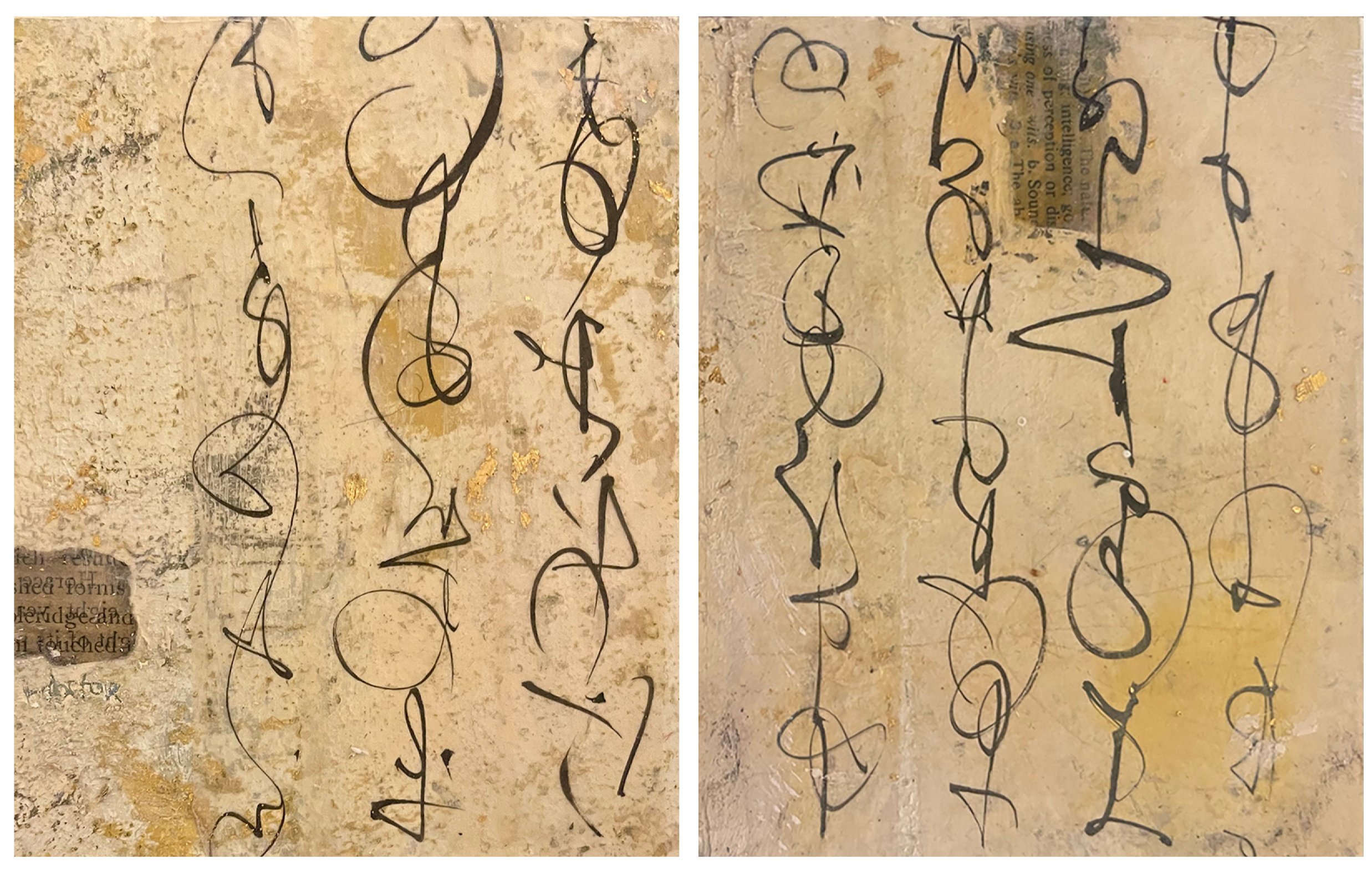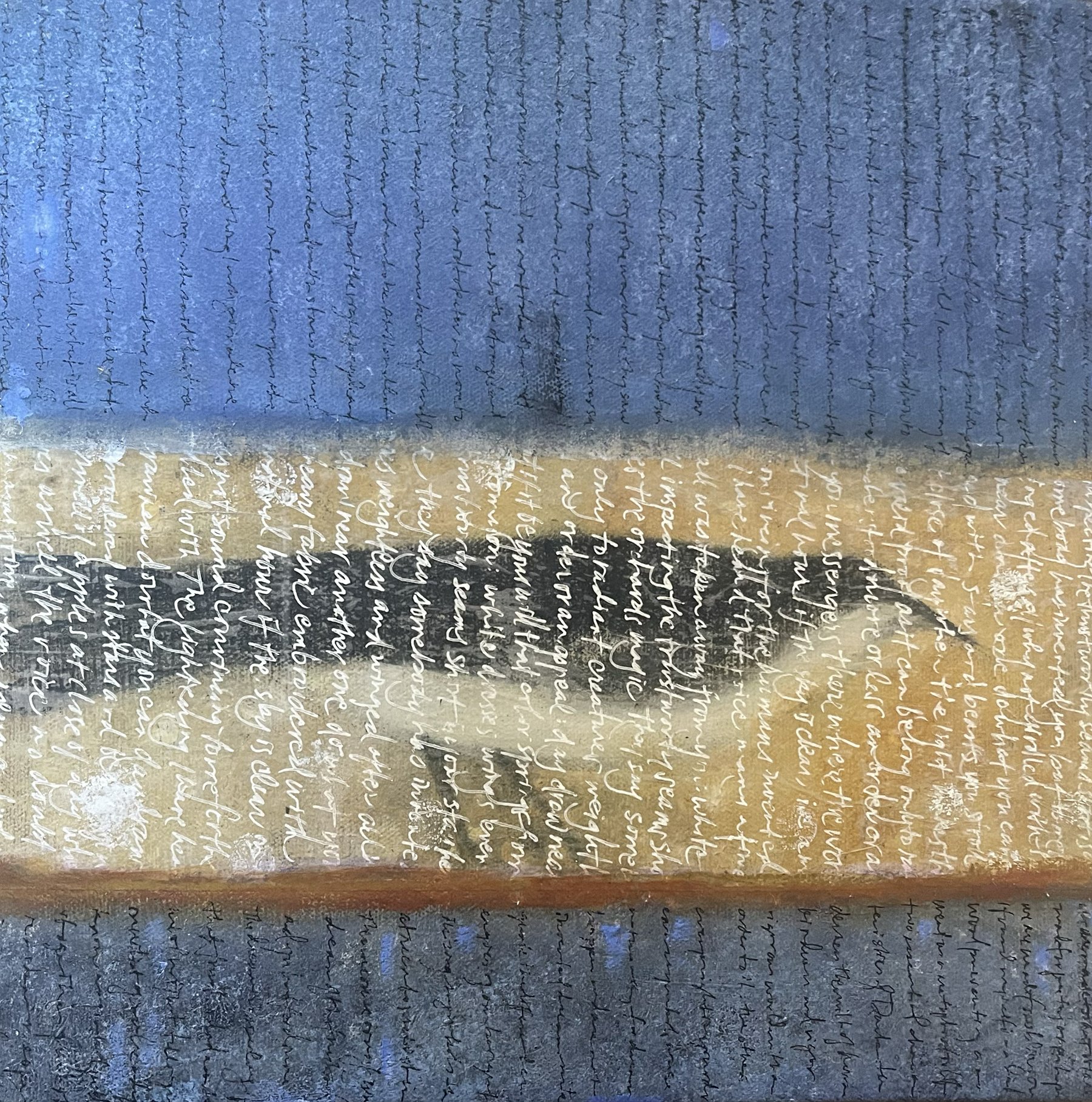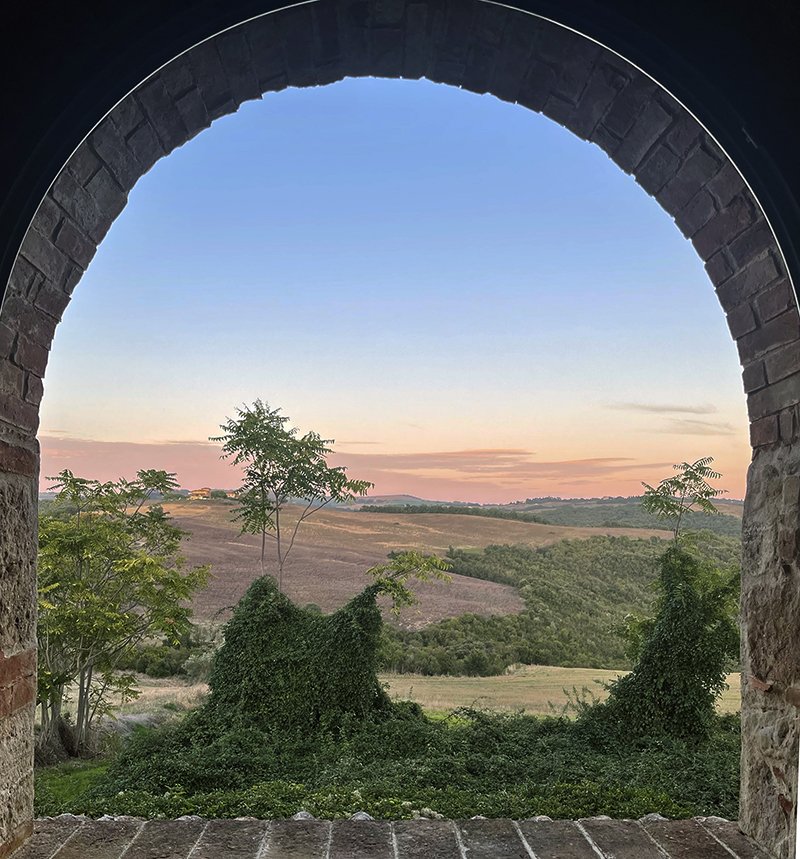
What Beckons You | Student Work
Many of you have heard me talk about the poet, William Stafford. He was also a compelling teacher, a prince of the imagination, at Lewis & Clarke College in Portland, Oregon. He said to his students, regarding their work, it’s not for me to praise or blame — but in the end, to be envious of your work. This is the pang and pride of teaching, to be inspired to be better by witnessing your work. He also said (when asked in disbelief by his students) how can you possibly write a poem every morning?! To which he famously replied lower your standards. I realized at some point that the man had no arrogance. He didn’t say he had to write a good poem each morning, he just wrote. He didn’t have to feel like writing or have anything good to say, he just showed up. Some work would end up in the trash. He let the world decide.

The World Depends on Our Participation
Oh joy, oh grief
oh sister-shifting-sands
where shall I stand?
And you say:
sit here
take my hand.
–Laurie Doctor
I had a different beginning to this post, but this morning I first want to acknowledge the grief in this world. It is easy for me to feel overwhelmed and at a loss for what to do. I remind myself that there are many ways to participate. We all need water and food, and beauty. I return to the resilience that comes from the practice of making, the resilience needed to restore hope. As makers our calling is to bring our focus close in, to repair the part of the world we can taste, see, hear, smell and touch. As makers, we are called to hold vision for the world, no matter the circumstance. So much is required of us now.

“…creator and receiver both, work in alliance with the works…”
Greetings to all new and returning readers.
Welcome to “A Silver Fraction”* —
a place for makers, writers, thinkers
& anyone who wishes
to leave an imprint, make a mark, inscribe,
write, sing, perform, or paint;
to anyone who wants to make an offering,
no matter how small,
to this world we were given.
William Wordsworth’s epic poem, Prelude begins with an invocation to the muse: O welcome messenger! O welcome friend! A captive greets thee, coming from a house of bondage… Wordsworth, like most of us who struggle with what we make, calls out as an inmate wanting to free himself from prison. He activates the muse through his writing, through his willingness to beseech and make transparent his longing. Muse embodies the sense of the invisible otherness that is not you or me — but happens when “…creator and receiver both, work in alliance with the works…” When the creator and receiver are working together there arises a third thing; something in addition to you and your work; a presence in the room. Modern artists of all kinds summon the muse, a name for this unseen presence, a name given to us by the ancient Greeks. What we make is only a testimony to a greater desire to enter this mysterious province. What we make is only a testimony to a greater desire to enter this mysterious province. We need, now, more than ever, the comfort of being still long enough to feel this presence. What follows are some thoughts on invoking this presence with our hands.

“We are meant to know we have lived a life and not just done this and that.”
This time between Christmas and the New Year has always been a liminal time for me, a time to set down my ambition, my brushes and normal routine. I am reminded once again that awareness needs refreshing, that there is available all around us a source of wisdom and inspiration, if only we can limit the interference. How do I make myself more accessible to — what is your word — the muse, pure being, divine presence, the mystery, god? The something that is both inside us and otherness. Being a maker is my longing for this presence. I think it is what Rilke means when he says: Only in our doing can we grasp you. It is not so much about what we make as it is being an instrument that is ready for song. The instrument needs tuning. The vessel needs emptying. This is the hour of clearing and noticing signs. Yes there are the family and friend celebrations so integral and precious to this season, but the balance of time in silence is what prepares me for the new year. The openness to what wants to come leads me to a new focus for this threshold: listening, reading, walking and arranging.

Winter’s Cloak
Winter is a time for night and dreams to sustain us. There is always a message waiting at the edge of your dream. Something more is always possible. This series of paintings was inspired by winter, the necessity of the “bigger picture” in times of darkness, and the poetry of William Wordsworth — “Something evermore about to be”.

New Exhibition: Winter Seeds Promise
I thought about not posting today, not on this election day in the USA, (my practice being the first Tuesday of the month ), but then I thought what better time to hear Denise Levertov’s poem Concurrence that she wrote during another time of cultural upheaval — the Viet Nam War? What better time to be reminded that while there may be “madmen at the wheel” there is also the timeless faultless blue of a morning glory, or a bluebird, or sky. There is comfort in unexpected outbreaks of blue — like now, three bluebirds checking out the bluebird house — or a poem that takes hold, or returning to the mystery that holds us all on this giant ball spinning on its axis in endless space. There is comfort in the harvest moon that has returned for billions of years without hesitation or concern for our trials. There is possibility in every first sunlight.
Each day’s terror, almost
a form of boredom—madmen
at the wheel and
stepping on the gas and
the brakes no good—
and each day, morning-glories
faultless, blue, blue sometimes
flecked with magenta, each
lit from within with
the first sunlightConcurrence |Denise Levertov

Tales from Tuscany
I can only give you a glimpse of our time in Tuscany, and that is how it is for all of us. The greatest things cannot be told. And the photos don’t convey the people, the laughter, or how they take such good care of you. Or the full moon rising on our first evening.
I am on the plane home now, and everything is fresh, and so I want to give you a picture. I was with my dear friends Birgit Nass, Mari Bohley and Massimo Polello. And Massimo’s husband, Domenico Quaranta joined us, with the hope and miracle of keeping us organized.
We worked with a couple poems for the week, which Birgit had designed and ready for screen printing. The first one, Prayer, by Galway Kinnell, became a favorite:
Whatever happens. Whatever
what is is is what
I want. Only that. But that.
Such a short poem that keeps working on you like a Zen koan. Perhaps he titled it “Prayer” because it’s a perfect aim and such a far reach, to pray for what happens. It’s a vision that can change the way we respond to our work, and to whatever crosses our path. This is my grail too, my knight-seeking thing . Whatever what is is is what I want. As William Stafford once said, everything is practice.

Experiments with “Calligraphic Still Life”
I promised in my last post to share ideas about these “calligraphic still lifes.” Many of you will have experimented with these tools, but perhaps not all together on the same surface, or as an exploration into still life. It’s only the beginning. I plan to go much further into abstraction, and into lettering and landscape. My aim is not to have products, but to play. This is working (I mean the part about playing.) My other aim is to have my students playing with tools they may not normally use, and to have tools that fit into my carry-on like crayons, oil pastels and watercolor. (I am sticking with my Mary Poppins effort to have all my clothes and tools and cosmetics for three weeks in Italy fit into one magic bag. At the moment I am in a room with art supplies, clothes, notebooks, journals, pen nibs, thread, soap, vitamin C and shampoo scattered across all surfaces.)
I made a couple short videos to share my process of experimenting with calligraphic still lifes:

“After the final no there comes a yes”
“After the final no there comes a yes, and on that yes the future world depends.” — Wallace Stevens
Last week I wrote myself a letter and mailed it. I just got it back, and as I write this, have not yet opened it. Ok, I just opened it. What is the part of me, I wonder, that waits to open it until I am writing to you? I think it is the same part that reaches, in a myriad of ways, for the sustaining sense of otherness. But when I wrote the letter I was depending on the four-year-old me who says “write this letter as if it is from the kindest-wisest most encouraging person you know.”

Maker is both a noun and a verb
“This morning my assignment is pleasure.” I wrote this in my sketchbook today as a remedy for the many hours I have spent agonizing over a painting, or a piece of writing, or one letter. The struggle is, in part, “the nature of the beast” — the uncertainty and self-doubt involved in the decision to be a maker, the conflict of leaping ahead instead of listening to what the work wants. The shift to plowing through any conceptual road blocks and doing something is a key. But the real guide for me is to work with some tool or surface or color that gives pleasure — even if what you are looking at, as I am now, is an immense pile of imperfect paintings or a tall stack of (mostly) unpublished writing.
Over and again I'm reminded of what I know, of what you know. I mean the most important kind of knowing, the kind that gets lost when I'm busy or distracted — for example, today, remembering when I take my small sketchbook with me, when I mark something down, even one small thing in a day — how this keeps me as a plant watered, rather than wilted. How this one mark can baptize everything that happens in a day.
